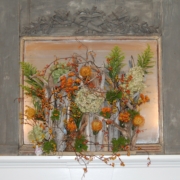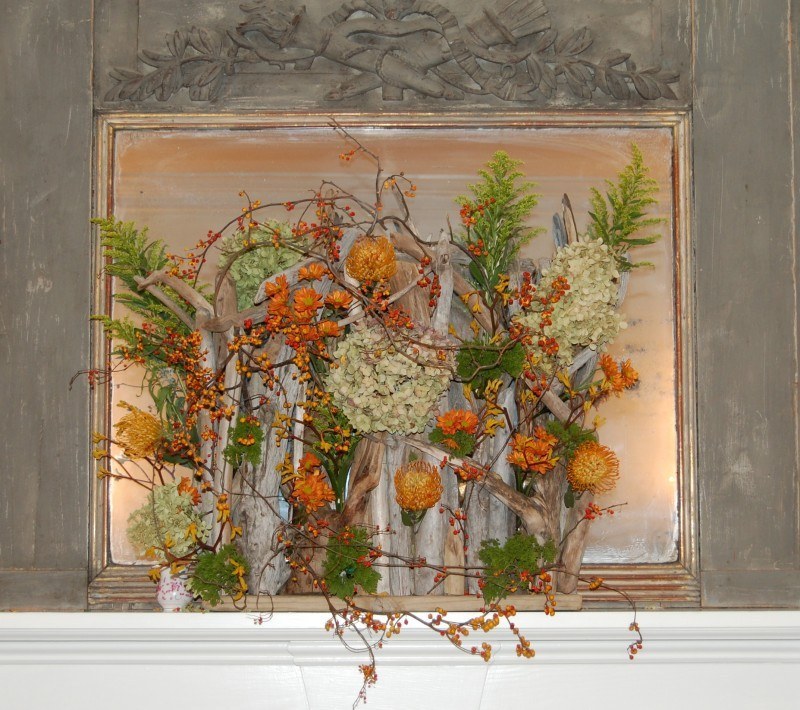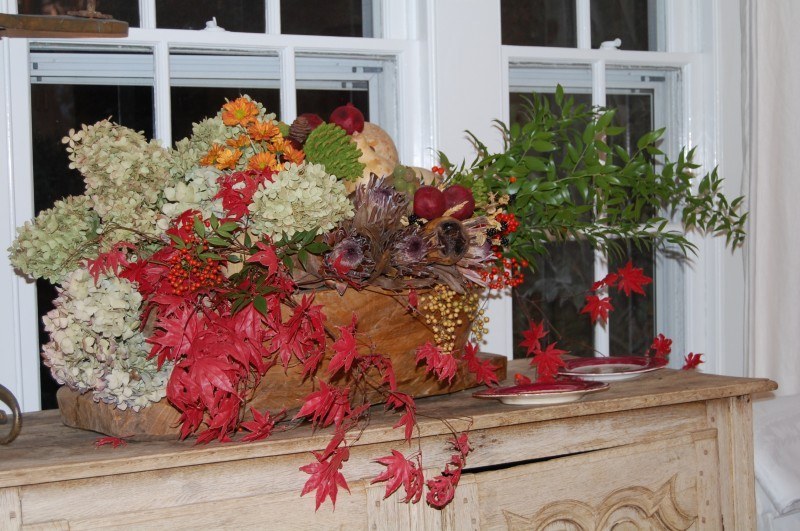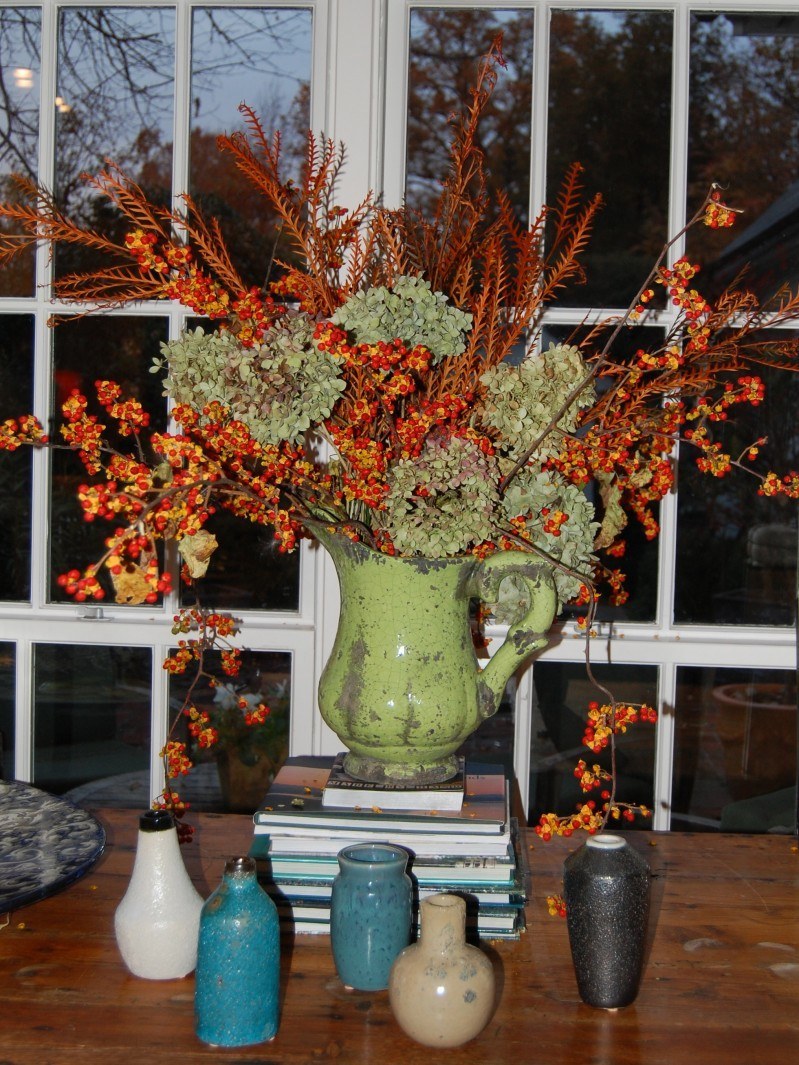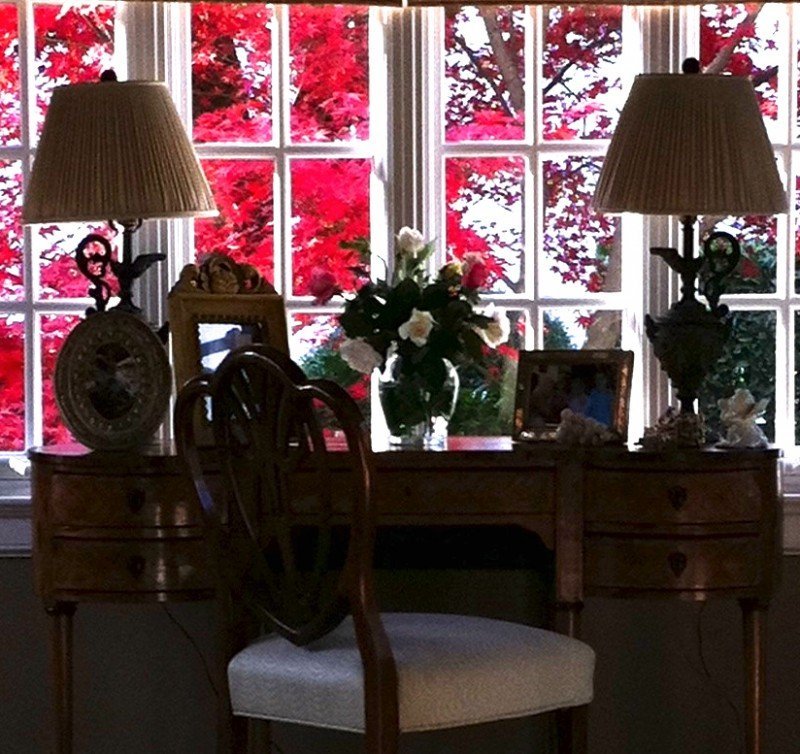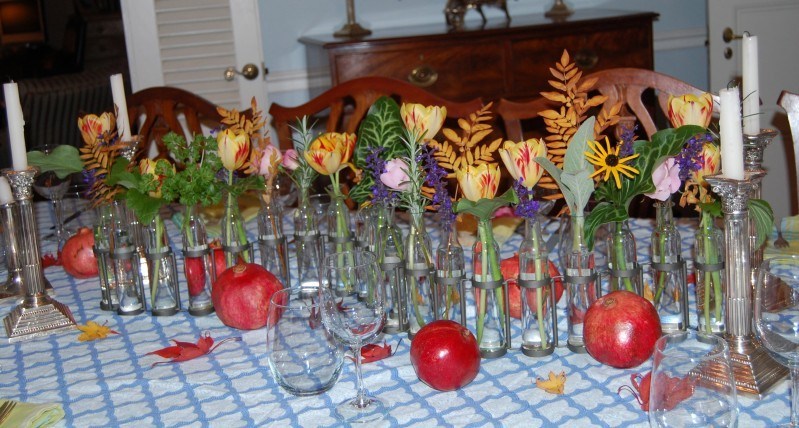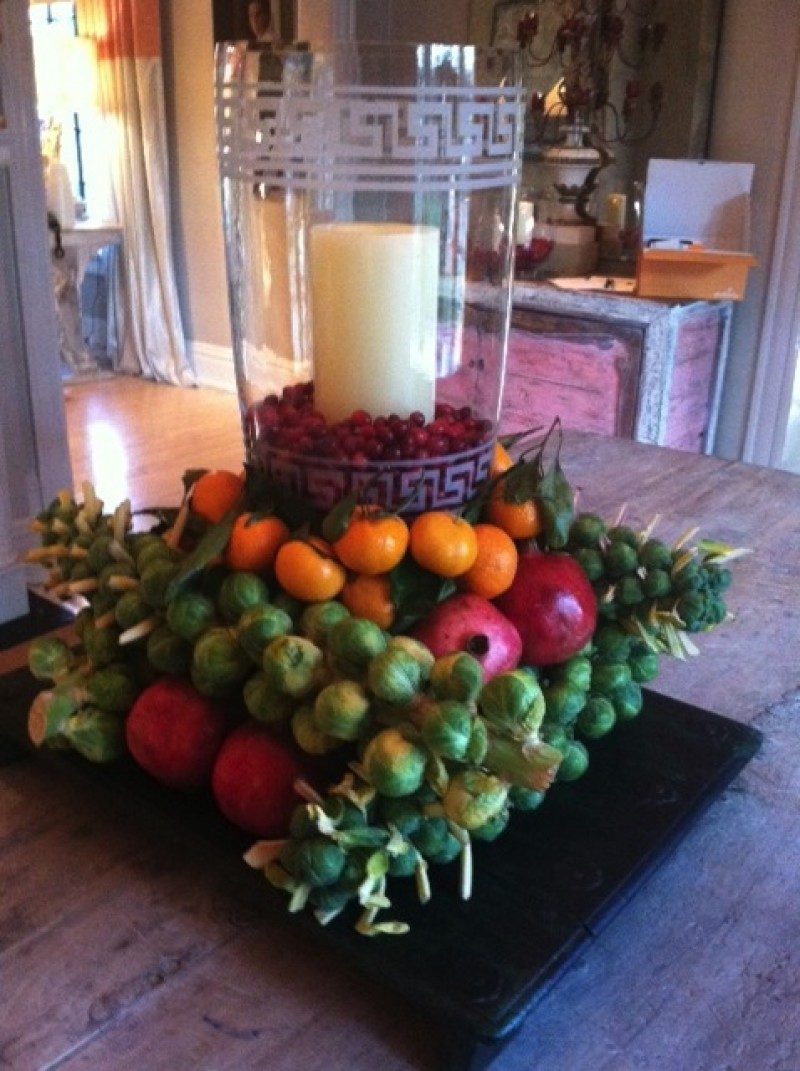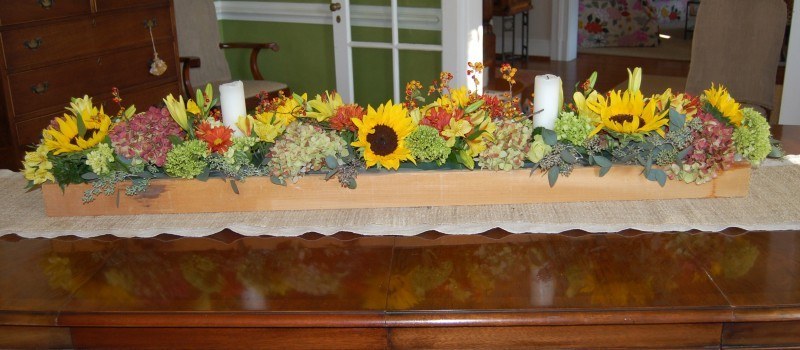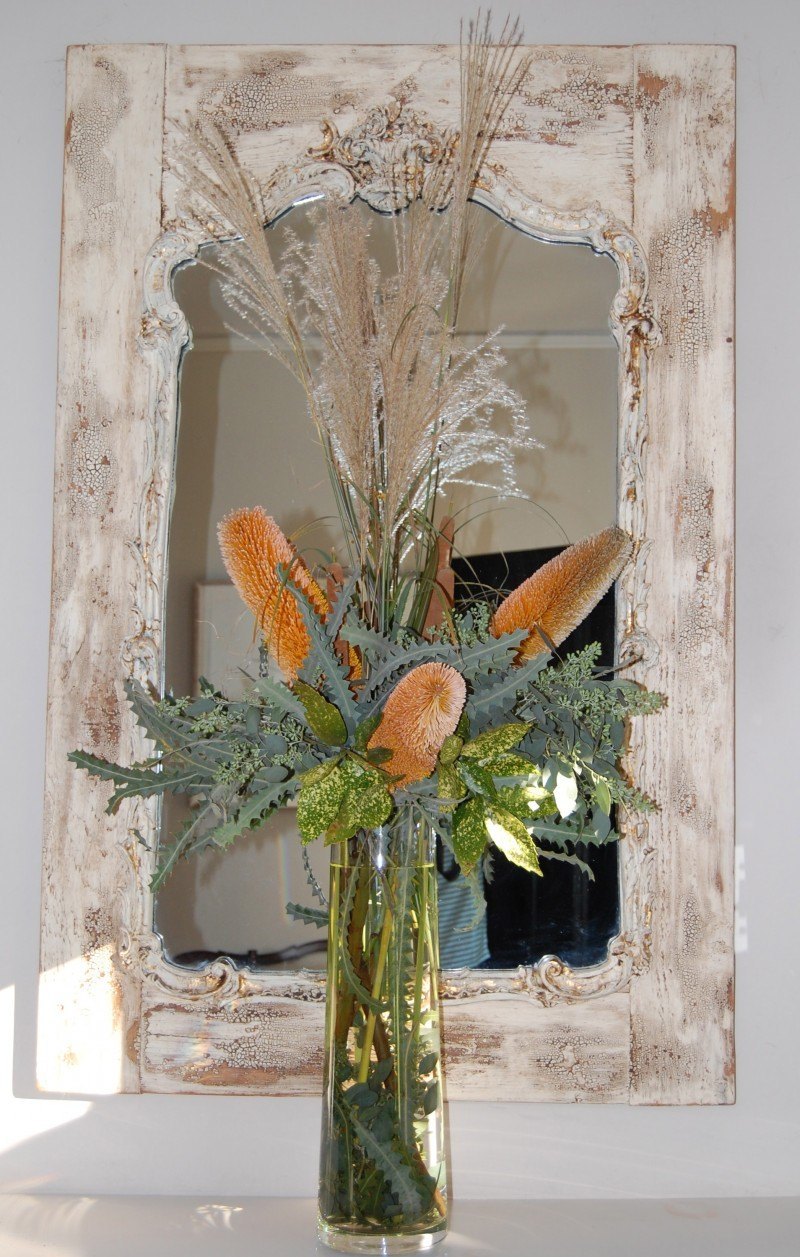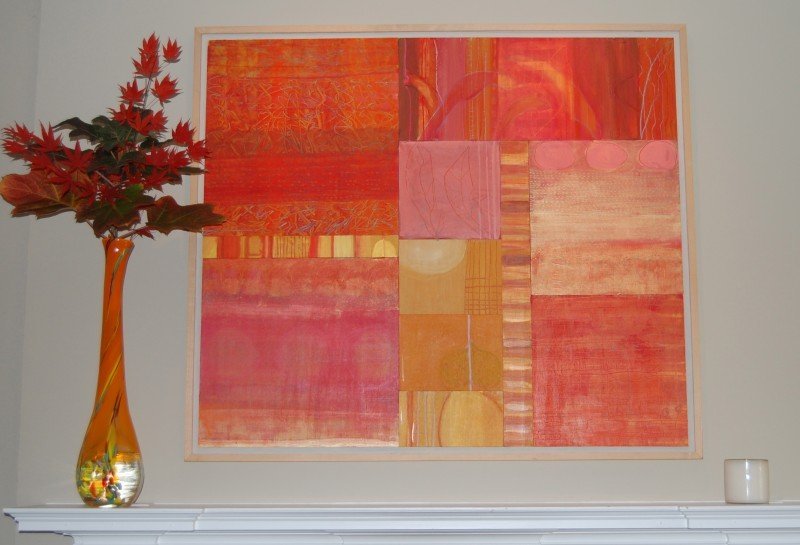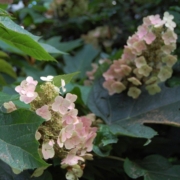FAB THANKSGIVING ARRANGEMENTS
As I write, greens and flowers are being cut and expertly pulled together into stunning arrangements. Alas, this Thanksgiving I was not able to get my act together to photograph those arrangements. Instead, I’m reposting the first blog post I did on Thanksgiving arrangements, in hopes of inspiring you to have some fun with greens and flowers this week. Happy Thanksgiving to all!
Some talented Richmond women got creative as they decorated for Thanksgiving. They gathered the bounty of their Fall gardens, pulled out a variety of vessels, and went to work transforming the beauty of Nature into gorgeous works of art.
Deborah Valentine, owner of V for the Home, and Floral Designer Bocky Talbott chose a container made from tree bark. The container picks up the grays in the gorgeous framed mirror. Those muted hues are a great foil for the Bittersweet. Hydrangeas from Deborah’s yard and exotic greens and flowers that Bocky found in a local flower shop complete the arrangement.
This arrangement, sitting on a chest in Deborah’s dining room, contains dried Hydrangea, bright red Japanese Maple branches, Poet’s Laurel, Nandina berries, Pomegranates and seed pods.
Deborah and Bocky refreshed an arrangement Deborah had done weeks ago, by adding Bittersweet and what appears to be a deciduous fern (just a guess — I have no idea what it is!) to the dried Hydrangea. The faded green of the Hydrangea picks up the green in the pitcher, and has a calming effect on the bold colors that were added.
Margy’s mom, Peggy, brought Margy some of the last Roses from her beautiful Rose garden. Margy, a talented painter, has a great eye for color and composition. She took full advantage of the stunning Japanese Maple outside the study window, by framing the final Roses of the season with the brilliant red foliage.
Margaret Valentine got jiggy with her linked bud vases (available at Paper Plus), taking advantage of the wealth of plants in her yard to create a lively, colorful tableau. She used Lamb’s Ear, Rosemary, Salvia, Arum, Parsley, Fern, Knockout Roses and Black-eyed Susan, throwing in some florist Tulips that sport complementary Fall colors. Then she sprinkled the table with Pomegranates and Maple leaves for a refreshingly different centerpiece.
Susan Robertson used the same vessels to create an arrangement with an entirely different look. She chose elegant simplicity, in both color palette and plant choice. The pink and white of the single Camellia Sasanqua (and the solitary Snowball Viburnum) are a nice respite from the usual Fall colors.
Taking inspiration from the paintings in the background, Susan gathered Japanese Maple branches (from both yellow and red cultivars) and combined them with Hydrangea that have turned a fiery red, then ratcheted up the volume by arranging them in the fabulous fish container (you can take the girl out of the Beach, but you can’t take the Beach out of the girl).
Interior Designer Janie Molster composed an edible work of art for her table. I love the bounty of the harvest contained in a severe modern geometry, set on a rustic table. Pomegranates, Clementines (with stems and leaves intact) and Brussels Sprouts still on their stalks support a hurricane with a candle nestled in dried cranberries.
Jennifer Sisk’s centerpiece is a masterpiece. She had a wooden box built about six feet long by 6 inches wide, then placed it on a a linen runner, overlayed with burlap. She stuffed the box with Oasis, then filled it with a mix of flowers and greens from her garden and the flower shop. The plants include Sunflower, Seeded Euonymus, Hydrangea, Lilies, Mums and Bittersweet. She then tucked in two candles.
Jennifer tells me that the three stalks are from the protea family. Check out its jagged blue-gray foliage. Jennifer’s choice of Cat’s Tail, Variegated Aucuba and Seeded Euonymus tie the arrangement together, as does her repetition of the foliage in the water. The grasses blend perfectly with the patina of the mirror.
So simple, but so spectacular. The use of only Japanese Maple and Oakleaf Hydrangea foliage (from Jennifer’s garden) make the vase and painting come alive.
Everything that slows us down and forces patience, everything that sets us back into the slow circles of nature, is a help. Gardening is an instrument of Grace. May Sarton
I give Thanks for the generosity of my friends who shared their talents with us today.
Happy Thanksgiving!

